Stable Matchings with Restricted Preferences: Structure & Complexity
Christine Cheng (University of Wisconsin, Milwaukee)
Will Rosenbaum (Amherst College)
Overview
- Background
- Main Results
- Methods
- Open Problems
Stable Marriage Problem
Agents: traditionally, men and women
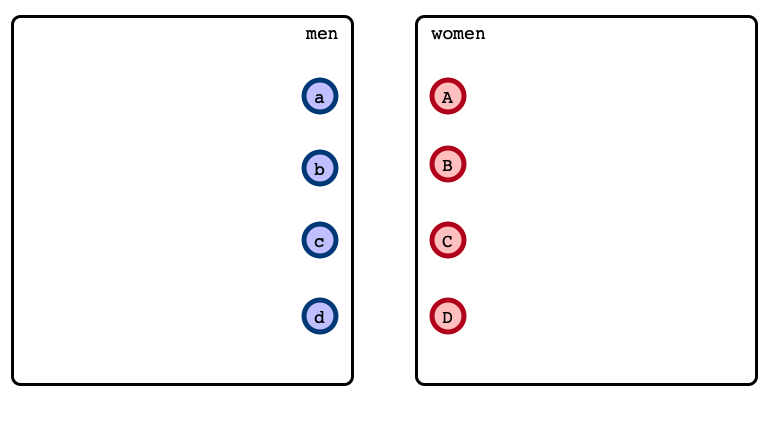
Stable Marriage Problem
Preferences
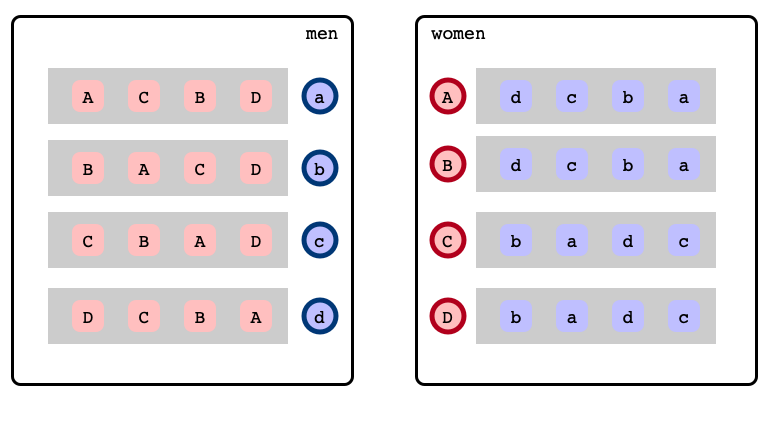
Stable Marriage Problem
A matching…
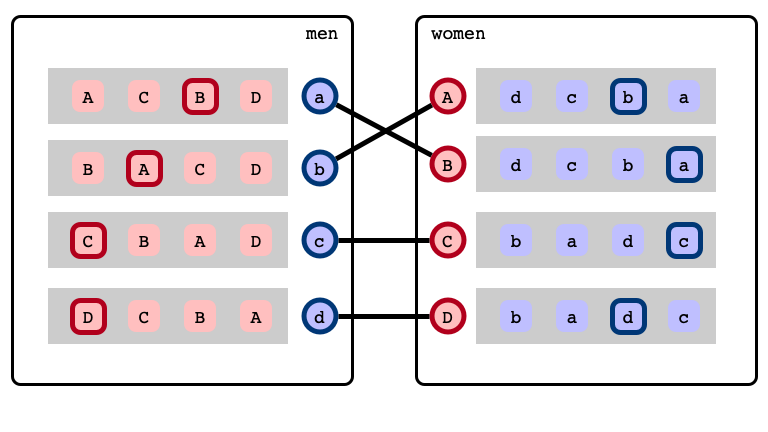
Stable Marriage Problem
… with a blocking pair
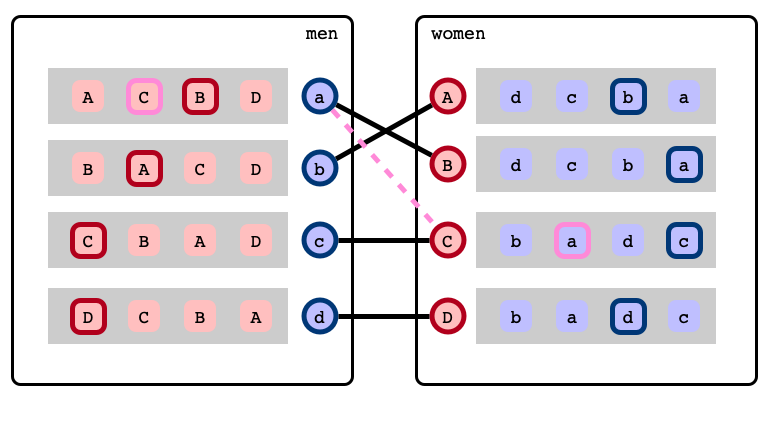
Stable Marriage Problem
A stable matching
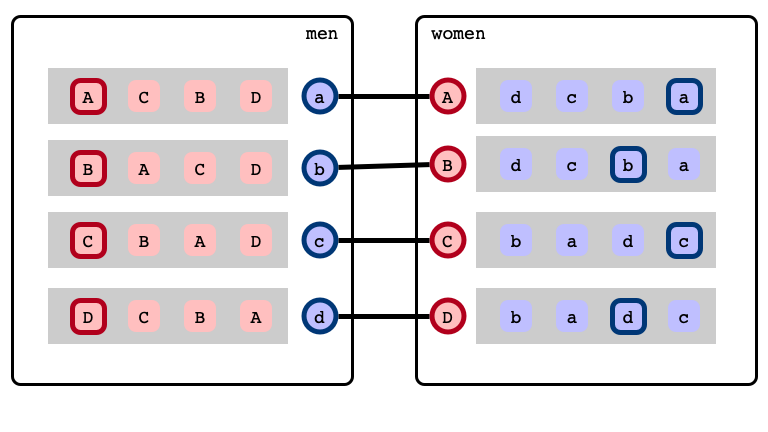
Gale-Shapley Algorithm
Gale & Shapley 1962:
- Efficient algorithm that finds a stable matching
- stable matchings always exist!
Limitations of Gale-Shapley
- Finds at most two stable matchings
- one optimal for men, pessimal for women
- one optimal for women, pessimal for men
- Can be exponentially many stable matchings!
Questions
- How many stable matchings does an instance have?
- Can we find fair stable matchings?
- median
- balanced
- sex-equal
- …
- Can we sample a uniformly random stable matching?
To address these questions, must understand structure of stable matchings!
Rotations
A stable matching

Rotations
a’s next best choice
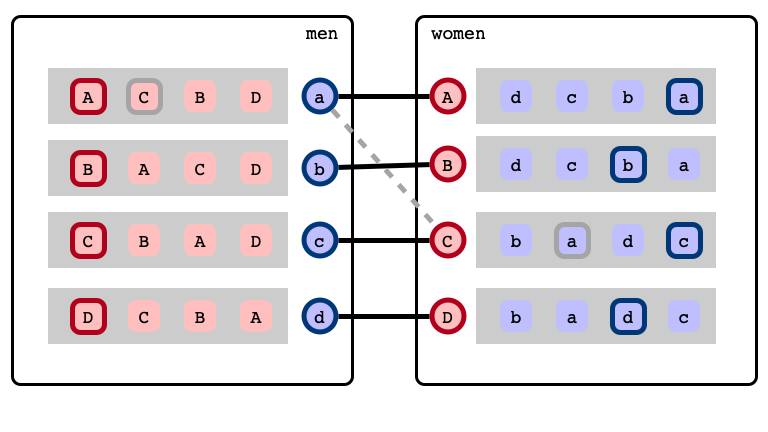
Rotations
c’s next best choice
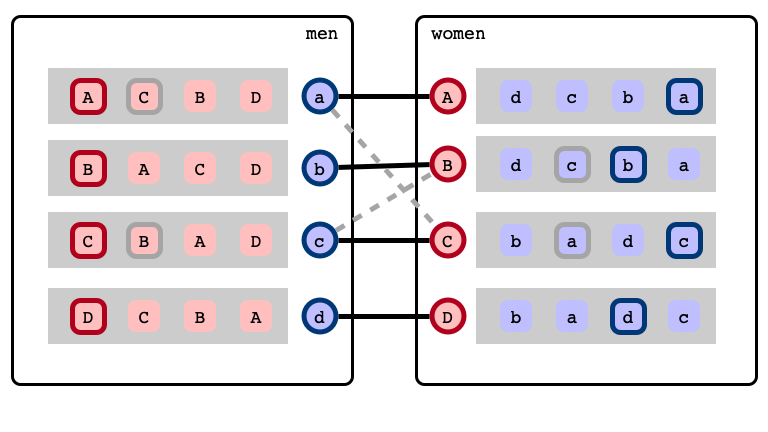
Rotations
b’s next best choice
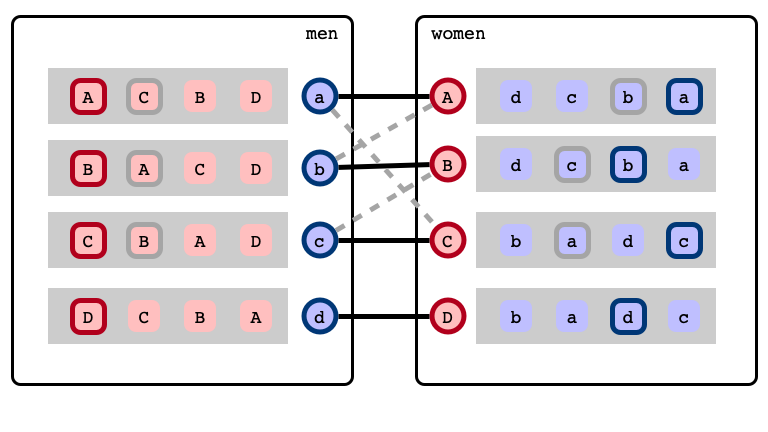
Rotations
Rotation exposed!

Rotations
Rotation eliminated—new SM found!
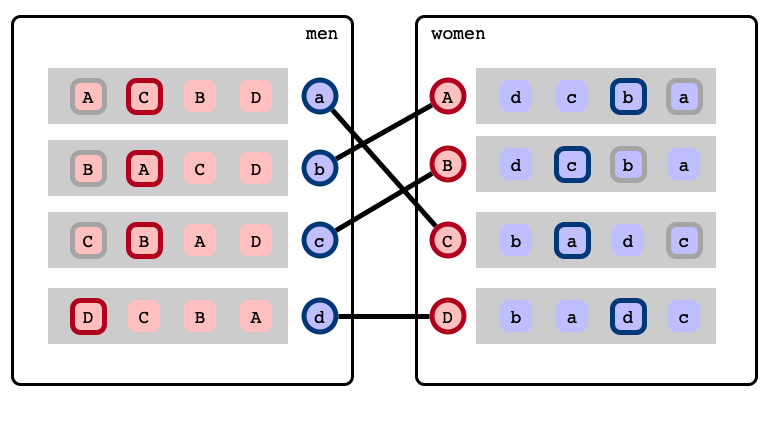
Structure of Stable Matchings
Irving & Leather, 1986:
- All stable matchings obtained by eliminating sequence of rotations
- Natural precedence relation on rotations: rotation poset
- Stable matchings one-to-one with downsets in rotation poset
Theorem (Irving & Leather, 1986):
- Rotation posets can be efficiently computed
- Every (finite) poset is a rotation poset
Structure and Complexity
The following problems are (NP)-hard:
- Counting stable matchings
- Finding median, balanced, and sex-equal stable matchings
Proof technique: reduction from equivalent (hard) problems on rotation poset
-
Structure of rotation poset determines complexity of associated task
Question
Do hard SM instances arise in practice?
Restricted Preferences
We consider restricted preference models:
- $k$-bounded
- $k$-attribute
- $(k_1, k_2)$-list
- $k$-range
2–4 introduced by Bhatnagar et al. (SODA 2008)
$k$-Bounded Preferences
An SM instance is $k$-bounded if all preference lists have length at most $k$
Motivation. Rarely the case in practice that one would rank all possible partners!
$k$-Attribute Preferences
Each agent $a$ has a profile $(v_a, \phi_a)$
- $v_a \in \mathbf{R}^k$
- $\phi_a : \mathbf{R}^k \to \mathbf{R}$, linear
- $a$’s ranks potential partners $b$ according to $\phi_a(v_b)$
Motivation. Ranking by questionnaires (e.g., dating websites):
- $v_a$ encodes own responses
- $\phi_a$ encodes desired responses of ideal partner
- $k$ is number/dimensions of questions
$(k_1, k_2)$-list Preferences
- Men/women partitioned into $k_1$ / $k_2$ groups, respectively
- All agents in each group have identical preference lists
Motivation. Cases where preferences inferred from group identity
- E.g., all prospective CS majors adopt same rankings of universities
$k$-Range Preferences
- For each woman $w$, men’s rankings of $w$ differ by at most $k - 1$
- For each man $m$, women’s rankings of $m$ differ by at most $k - 1$
Motivation. Preference derived from “master preference lists,” but with some noise.
Main Question
What rotation posets are realized by restricted preference models?
- Can we exploit restricted preference structures to give efficient algorithms for (restricted instances of) NP-hard problems?
Hardness Results
Theorem 1. Let $\mathcal{P}$ be an arbitrary finite poset. Then there exist SM instances in the following models realizing $\mathcal{P}$:
- $k$-bounded for any $k \geq 3$
- $k$-attribute for any $k \geq 6$
- $(k, \infty)$-list for any $k \geq 2$
Such instances can be computed from $\mathcal{P}$ in polynomial time.
Hardness Consequences
-
Structural problems are as hard in the following models as the general case:
- $k$-bounded for any $k \geq 3$
- $k$-attribute for any $k \geq 6$
- $(k, \infty)$-list for any $k \geq 2$
- For example:
- counting stable matchings is #BIS-complete
- finding median stable matchings is #P-hard
Algorithmic Results
Theorem 2. For constant $k$, the rotation poset of every $k$-range SM instance has bounded pathwidth.
- Structure of $k$-range rotation posets is highly restricted.
Theorem 3. Given a poset $\mathcal{P}$ with pathwidth $k$, can efficiently construct an $O(k)$-range SM instance realizing $\mathcal{P}$.
- Pathwidth characterizes $k$-range rotation posets
Algorithmic Consequences
For any constant $k$, and any $k$-range instance, we can efficiently
- count and sample stable matchings
- find median, balanced, and sex-equal stable matchings
These problems are NP-hard in general!
Takeaway Messages
- For small constant $k$, $k$-bounded, $k$-attribute, and $(k, \infty)$-list preferences realize all finite posets
- structural problems are as hard as for general instances
- For all constant $k$, $k$-range preference have highly restricted rotation posets
- computational problems may be significantly easier than the general case
Constructions
Goal. Given a poset $\mathcal{P}$, construct an SM instance with
- rotation poset isomorphic to $\mathcal{P}$, and
- preferences from a (chosen) restricted family
Start with Rotations
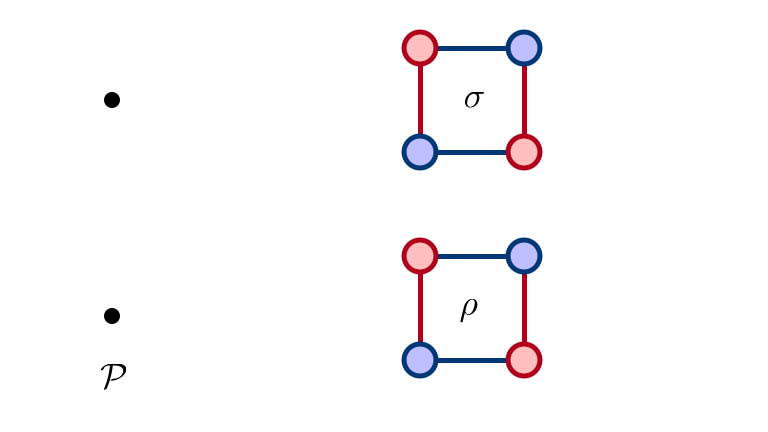
SM 1: Man Optimal
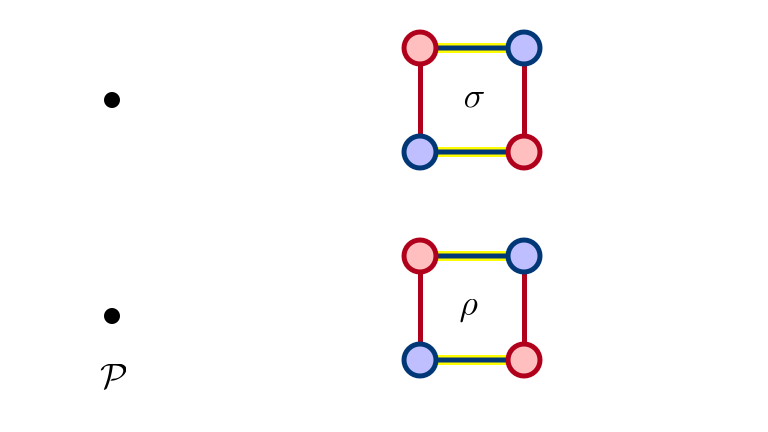
SM 2: $\rho$ Eliminated
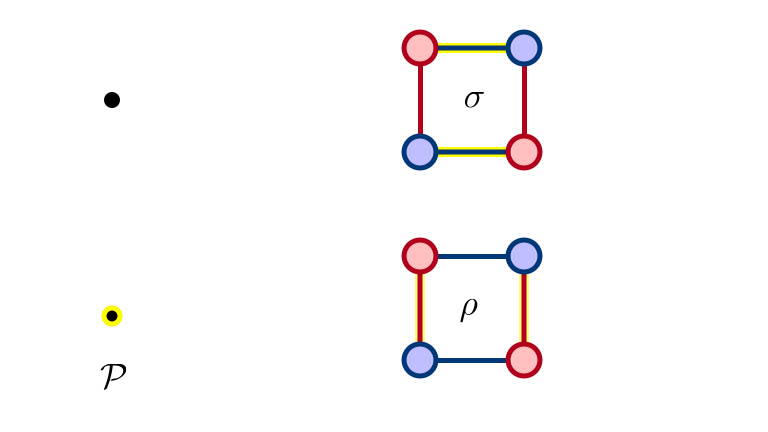
SM 3: $\sigma$ Eliminated
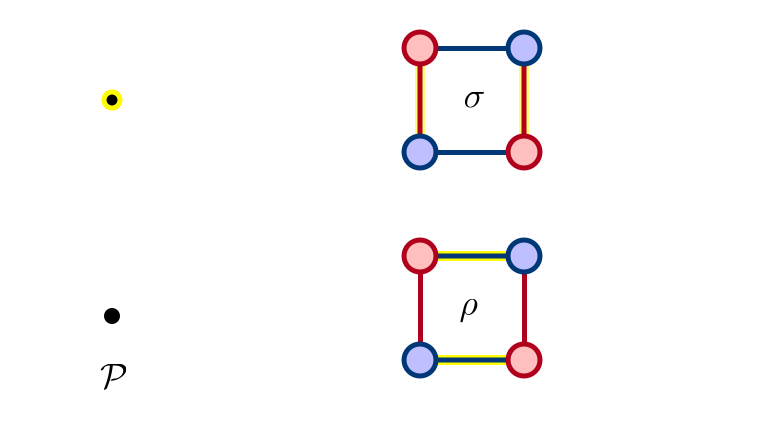
SM 4: $\rho, \sigma$ Eliminated
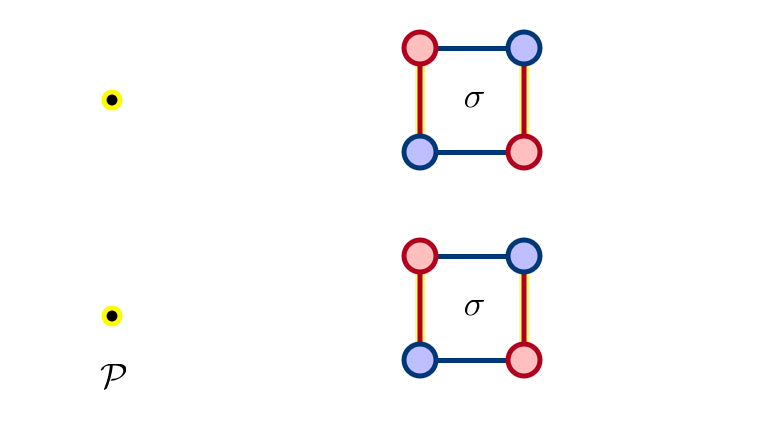
Adding Edge
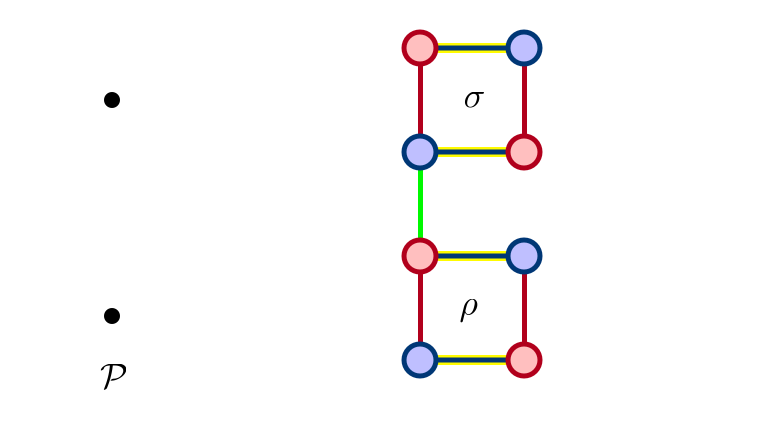
$\sigma$ Not Exposed…
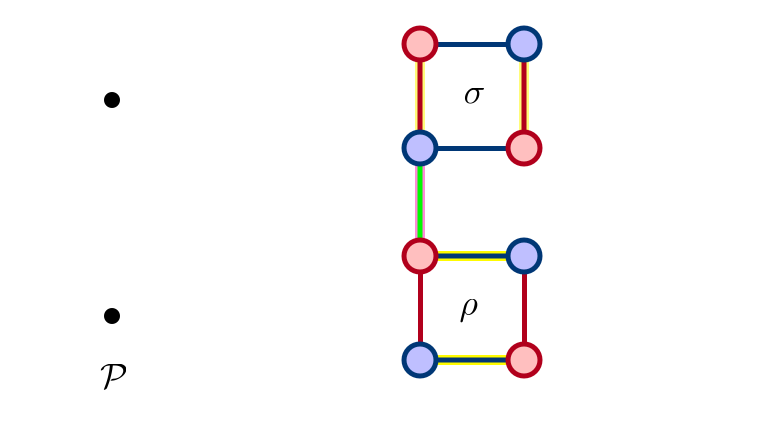
$\sigma$ Exposed After $\rho$ Eliminated
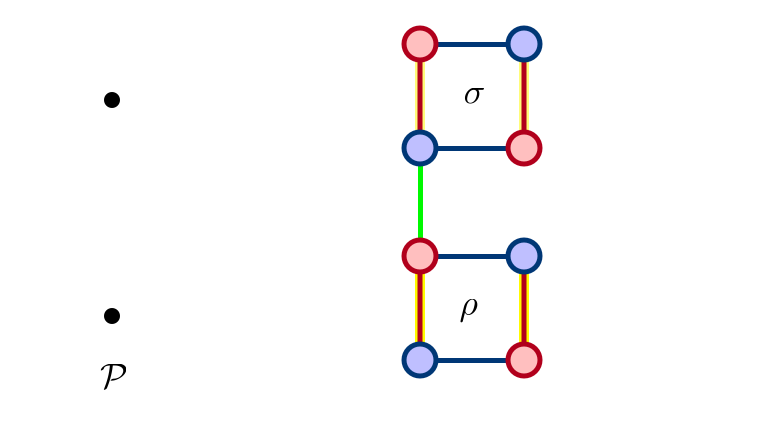
Added Precedence
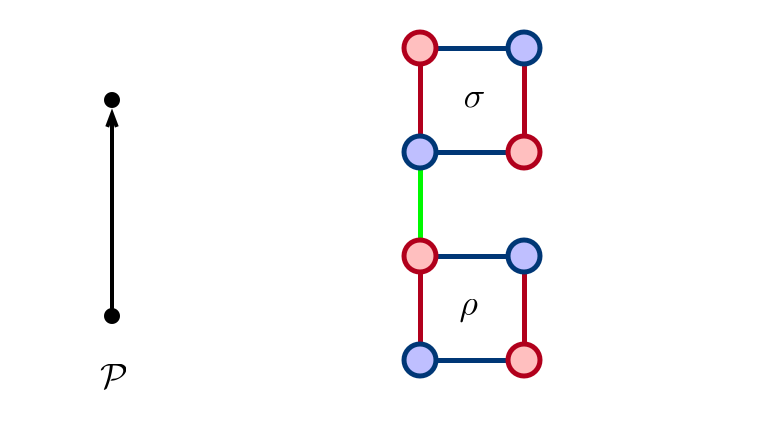
Larger Construction
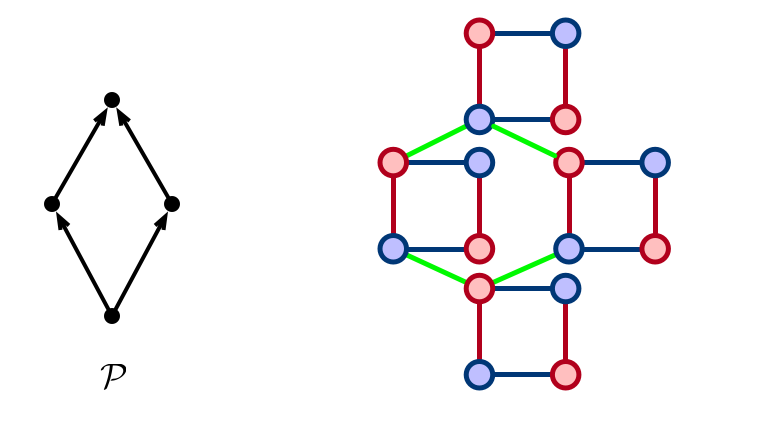
Paper Constructions
- Formalize “glueing” together rotations to force precedence
- Generic construction
- each poset $\implies$ many instances realizing poset
- construct instances in preference models
Open Problems
- Structure of rotation posets for $(k_1, k_2)$-list preferences ($k_1, k_2 < \infty$)?
- Generalizations to preferences with ties/indifference?
- Structure of stable matchings on restricted graph families (e.g., planar, bounded genus, …)?




















